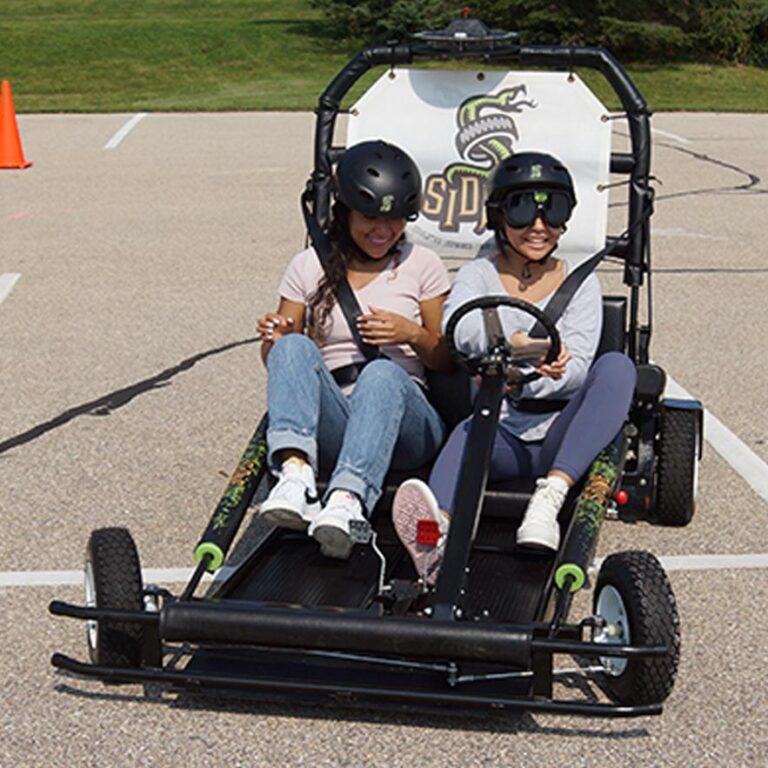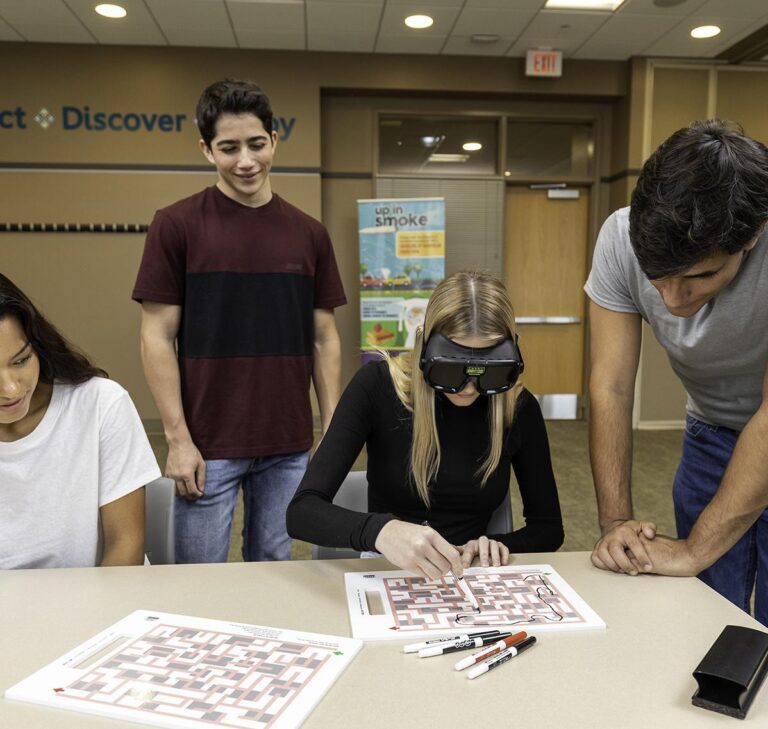
Understanding THC Impairment
In a THC awareness campaign, it’s important to understand THC impairment, its effects on the body, and the detrimental impact it can have. As educators, it’s crucial to provide
Across the country, some states and cities have been loosening laws concerning marijuana use. Michigan recently passed legislation to make the use of marijuana for medical purposes legal. Grand Rapids, the major city in western Michigan, passed an ordinance legalizing the possession of less than 1 ounce of marijuana on personal property for recreational use. But what is often overlooked in such legislation is the very real impact recreational marijuana use can have on drivers.
Norma Sower works with teens in western Michigan through a Spectrum Health community education outreach program. She takes her program, Project Save Our Children (PSOC), into all seven high schools in Montcalm County. And since Colorado legalized marijuana use, she’s kept a keen eye on any resulting consequences in anticipation of what could happen in Michigan.
“I watched what happened in Colorado,” she says. “It’s downright scary.”
Among the effects she’s noted are:
But in her mind, the most damaging thing about legalized marijuana use is the message it sends to children, including the teens she works with. “It tells students it’s OK to use marijuana,” Sower says. Frequently, if the parents of teens think using marijuana is OK, so do their children.
Not Your Parents’ Generation Mary Jane
What neither parents nor teens realize is that today’s marijuana isn’t like that smoked or consumed in the 1970s. THC-tetrahydrocannabinol is the mind-altering chemical in marijuana, affecting the brain and how it works. In the early 1970s, the THC content in a joint was 2 percent. Today, a similar joint contains 10 to 12 percent, according to Sower.
“In essence,” she says, “it’s a different drug.”
But that’s not the only reason for concern. “There are about 400 chemicals in marijuana, many of them carcinogenic,” says Sower. Research shows the carcinogens in one joint are equivalent to those in seven to 10 tobacco cigarettes.
In addition, today’s marijuana is highly addictive. According to AbovetheInfluence.com, “Marijuana, just like any other drug, can be addictive. It affects the brain’s reward system in the same way as all other drugs of addiction—and the likelihood of addiction increases considerably for those who start young.” Sower says that as many as one in six high school recreational marijuana users can become addicted.
But the impact of marijuana use doesn’t stop with the user. Most people are aware that the number one drug related to vehicle crashes is alcohol. But most have no idea that the number two drug related to crashes is marijuana.
Knowing these things, Sower worried about how she would educate her students. She felt like the deck was stacked against her, and ultimately against her high school students.
That’s when Innocorp contacted her with news about a new product, asking if she would test it. The company, famous for its Fatal Vision® Impairment Goggles that simulate different levels of alcohol intoxication, was developing a goggle that simulated the impairing effects of marijuana and addressed the very problem Sower faced. The Innocorp team invited her and another drug educator to Wisconsin a year ago to talk about what was needed to educate students about the dangers of recreational marijuana use.
“It was like Christmas for me!” she says. “It was exactly what we were looking for, handed to us on a platter.”
The Fatal Vision® Marijuana Simulation Experience In Action
Her product testing started by surveying two student groups on their attitudes about and knowledge of marijuana. In one group of 130 students, 30 said that marijuana was safe; the other 100 said it wasn’t. When asked if marijuana was harmful, she got pretty much the same results. The second group of 143 students responded in a similar manner.
What did this and conversations with those students tell Sower? “Students have the idea that marijuana is safe, that it’s beneficial, that it cures illnesses,” she says.
“They couldn’t tell which ball was which with the goggles on,” Sower says. “Many of them just guessed because they were unwilling to admit they couldn’t tell the difference.”
Then she moved on to testing the product itself, choosing activities from the kit. The first hands-on activity involved catching and reacting to various colored balls. Students without Marijuana Goggles tossed the balls back and forth. Sower told the receivers to accept the black ball but to ignore the other colors. They did so with no problem. But when students wore the Marijuana Goggles, that result changed significantly.
“They couldn’t tell which ball was which with the goggles on,” Sower says. “Many of them just guessed because they were unwilling to admit they couldn’t tell the difference.”
She followed the activity up with a discussion about how marijuana can cause the user to miss important information. Since it involved color differentiation, the obvious correlation is misreading stoplights, and students jumped on that right away. Some students mentioned that they could tell by knowing the order of the lights and checking to see which was lit. But Sower pointed out that if they looked at the lights and were unable to see that change, they would have a 50/50 chance of getting through that intersection safely.
The next activity used driving scenarios on video. As she ran the videos, Sower directed the students to identify things on the screen of importance to a driver using a laser pointer. The students wearing the goggles identified half as many points of importance as the students without goggles.
In the discussion after the activity, the group talked about blind spots impaired drivers have. Since the student wearing goggles missed so many important points—such as red tail lights indicating a stop, sounds of people waiting to cross the street, the sound of a motorcycle pulling alongside a bus—the students had a firsthand demonstration of how important all five senses are for a driver, and how easy it is to focus on the easiest sense (vision) while impaired.
“The impaired driver never saw the brake lights in front of him,” Sower says. “This activity was so great for discussion…This was one of those ‘oh my gosh, I can’t believe they are not hitting their brakes!’ moments…The kids just got it.”
The third activity involved a grid with flashing lights. The student wearing the Marijuana Goggles is unable to discern the changes in the lights as they flashed. By this time, students were eager to try the goggles, so Sower had eight or nine try the grid.
This was an important activity for Michigan students in particular, Sower explains, because Michigan has a lot of construction zones on its roads. All of them are marked with flashing lights. During the discussion, they talked about this and referred back to their discussion about discerning which light was lit in stoplights during the ball activity.
“It was great how the activities fed into each other,” Sower says.
The final activity involved a maze and two pens—one pen that flashes, one that doesn’t. Students are asked to complete the maze using the flashing pen. Those not wearing goggles have no problem choosing the correct pen and completing the maze within 30 seconds. But the ones wearing the Marijuana Goggles wasted eight to 10 seconds trying to discern which pen was flashing, and then could not negotiate the maze itself.
“This simulation shows how marijuana affects short-term memory and the executive function of the brain,” Sower says. “It demonstrates how the brain slows, how every step has to be thought out.”
Meeting Program Goals
“Our goal with this program is to give students experiences to reflect on,” says Sower. “Innocorp has knocked it out of the park with the Marijuana Goggles. It’s so much better than a lecture or a video. It’s hands-on, and that’s how students learn.”
At first, when she looked at this kit, she thought,”How am I going to get this all done in an hour?” But the program filled the hour nicely and afterwards she remarked, “Kids nowadays just seem to get bored and disinterested if you are not hitting them with activity and discussion followed up with additional activities and discussion to keep it rolling.”
“It’s a great discussion-starter,” she says. “It promotes thinking—it’s exactly what drug educators need.
“Innocorp just nailed it.”
Innocorp is the pioneering developer of Fatal Vision® Goggles and other experiential learning tools designed to educate on the dangers of impairment and promote risk prevention. Innocorp provides impactful, hands-on resources used globally by law enforcement, educators, and safety professionals to demonstrate the consequences of substance use, risky driving, and other dangerous behaviors.
We’d love to online chat! We are available Monday-Friday from 8am-5pm (CST):
Or schedule a time for a consultation:

In a THC awareness campaign, it’s important to understand THC impairment, its effects on the body, and the detrimental impact it can have. As educators, it’s crucial to provide

Education about impairment and making safe choices includes addressing common misconceptions about THC impairment and helping students understand the risks. There is a lot of misinformation, myths, and misconceptions

It’s important to incorporate hands-on learning when teaching students about the dangers of mixing THC with other substances. When building an educational course for students, it’s important to address
CUSTOMER SUPPORT
Buy America Act
Contact
GSA Customers
Returns
Shipping
Warranties
My Account
Login
Create an Account
INNOCORP HEADQUARTERS
500 S Nine Mound Road
P.O. Box 930064
Verona, WI 53593-0064
800-272-5023 Mon-Fri 8-5 CT
608-848-5558 Fax
©2025 Innocorp. All Rights Reserved